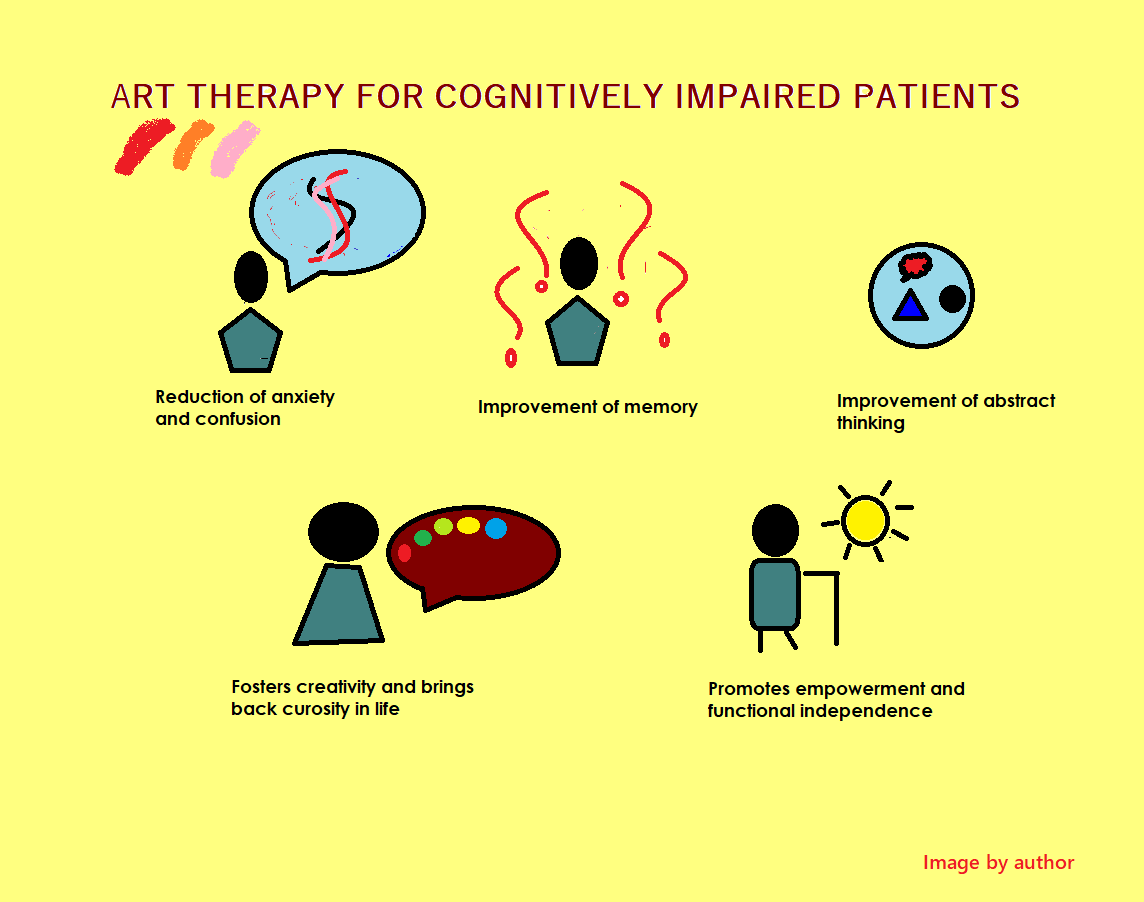Art therapy may help adults with mild cognitive impairment feel happier and more empowered—and slow the progress of cognitive decline.
By Sayan Roy
Cognitive decline is a serious risk faced by older adults around the world. A myriad of neuropsychiatric conditions such as dementia, Alzeihmer’s disease, and even post-traumatic stress disorder show signs of cognitive degeneration that creates long-term social and personal threats for the individual. Cognitive decline is a problem that not only makes the life of the patient difficult but also affects the emotions and the unity of family units too. Other than in-hospital multidisciplinary care, close community assistance coming in the form of support groups and family-centered care is invaluable in raising the patient’s quality of life.
Cognitive impairment can be so damaging that it can even take the life of the patient, but the stigmas around psychiatric care are so high in many societies that it can inhibit families from giving dignified care to their beloved family members. As social problems such as religious bigotry, health illiteracy, and racial discrimination accentuates the severity of cognitive impairment, a healthy, holistic healthcare model is often required for the dementia patients to improve the patient’s quality of life. The judicious use of medications in psychiatry can be well-complemented by non-pharmacological therapies, which is just the combination modern mental health frameworks are looking for. While non-availability of multidisciplinary care and rising healthcare costs can worsen the patient’s condition, affordable therapeutic techniques that foster creativity, artistic expression, and mindfulness in patients can also redress their cognitive difficulty and spark self-awareness. So, other than medications, what can help? Well, many things.
Art therapy and its many hands
Art is powerful: it can bring joy and empathy to our lives, help us connect to our souls, and create positive vibes in and around us. Art therapy and encouraging creative expressions can work magic in patients with mental health conditions, and many can regain cognitive well-being. Art benefits the patients in a number of ways, such as allowing emotional release, creating a sense of excitement, and bringing back curiosity in life. A recent study using Visual Arts Therapy (VAT) as a therapeutic tool with cognitively impaired patients implies art therapy also helps in building mindfulness to fight against anxiety and cognitive dysfunctions.
The researchers, performing a mixed-method randomized control study, indicate that visual arts help to improve the functional status, executive function, memory, and overall cognitive functioning in the aged patients. Art therapy delivered with the Zentangle method improved self-dependability, motivation levels, emotional management, and sense of relaxation in the patients with cognitive and depressive disorders. Visual art therapy improved self-efficacy and feelings of empowerment in mental health patients much more than Health Education (HE) or standard cognitive training. As older adults with low levels of educational literacy were chosen as study participants, despite the challenge of health illiteracy and cultural restrictions to drawing activities, the VAT program was indicated to be more successful for developing patient’s well-being than the standard treatments.
Useful techniques and cultural experiences
According to the abovementioned study, building strong peer connections and strengthening community help networks will elevate the socio-cultural experience of art activities. Asking the patient to draw on lived experiences and reflect on those precious moments to create a piece of art is often rewarding. Using soft music as an environmental cue (for relaxation) and supporting the patient’s personal choice of colors for making art is recommended to improve the self-learning, acceptance, and coping abilities of the patients.
While further study will be required to confirm these findings, this research implies enriching the psychocultural experiences of mental health patients through art therapy programs would have a positive holistic impact on the community as a whole.
This study was published in the journal Journal of Geriatric Psychiatry and Neurology.
Reference
Masika, G. M., Yu, D. S. F., & Li, P. W. C. (2021). Can visual art therapy be implemented with illiterate older adults with mild cognitive impairment? A pilot mixed-method randomized controlled trial. Journal of Geriatric Psychiatry and Neurology, 34(1), 76-86.

About the Author
Sayan Roy writes about science, society, and anthropology for both general audiences and serious readers across the internet. He is a science writer and enthusiast who likes to read fiction novels. Connect with him on facebook at www.facebook.com/Saayan4u.




